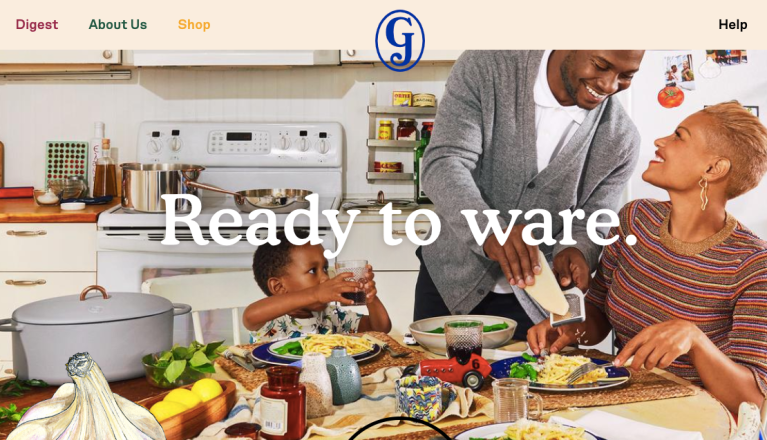
A week out from Thanksgiving, and home chefs nationwide are inspecting their gear, wondering if the tools are adequate for the task. Some will look at battered pots, mismatched utensils, a non-functioning food processor and what might have been the first crockpot ever sold – and decide that perhaps it is time to go shopping.
But the world of kitchenware is a vast and various place – and knowing where to start, even when it comes to buying something as simple as pots and pans, can daunting. One can start with a cheap set of pans for less than $50, pick up a reasonably nice (and Oprah-recommended) set for a few hundred dollars, or shell out around $1,000 for a set of pots and pans from Le Creuset if the goal is replicate a professional cooking experience in one’s own home.
And while one can reasonably infer that the $1,000 set is probably of a higher quality than the $50 set, food writer Sierra Tishgart realized that for consumers – particularly bridge millennials starting to buy homes, start families and equip kitchens – the world of cookware was something of a black box.
An expensive black box, at that, since premium cookware tended to be prohibitively expensive for shoppers – and, in Tishgart’s description, “unnecessarily complicated.” What makes one skillet better than another? Most customers don’t really know, other than judging by what they paid for it or what the reviews have said.
Plus, she noted, the design aesthetic wasn’t really all that appealing.
“I found myself at home more, and wanting to become a better home cook,” Tishgart said. “But I found the process of figuring out what I need in the kitchen to be really overwhelming, and cookware seemed to lack originality in design.”
And thus the concept for Great Jones – a cookware company for younger home cooks – was born.
It’s a potentially very lucrative market to attempt to take a bit out of, so to speak. As of today, the global cookware industry is estimated to be worth $2.1 billion, with big growth forecast in the coming years. And the numbers strongly indicate that millennials will be leading that surge – 60 percent of first-time homebuyers are millennials, and many will be looking to build their first “grown-up” kitchen.
But Great Jones is just one of many digital startups trying to capture this emerging demographic and disrupt the space. Launched in 2016, Made In is also in the pots and pans business, and Milo launched in April this year with a single product, a $95 Dutch oven. But Tishgart and her Co-founder Maddy Moelis (who was also a childhood friend and early employee at Warby Parker) believe they bring something a bit different to the table – and the stovetop.
“I was thinking that someone’s going to do this. But no one’s gonna do this exactly in the way that we can. And why not us?” Tishgart asked. “We knew that we’d approach this differently by marrying the substance with the style. This is a design piece in your home as much as a highly utilitarian and functional piece that you’re actually cooking with.”
The two raised a small friends-and-family funding round to get Great Jones off the ground, and to date have raised $3.35 million, according to Forbes. The company’s seed financing round, which closed in October, was led by VC firm General Catalyst.
The product line is simple in these early days, though doubtless useful to anyone contemplating a large number of dinner guests. Great Jones offers four pieces of stainless steel cookware (a saucepan, a sauté pan, a stock pot, and a small fry pan with a ceramic non-stick coating) and one Dutch oven, all priced between $45 and $145 individually, with a full set selling for $395.
Tishgart and Moelis said they’ve used the same materials as high-end brands to ensure even distribution of heat during cooking, though their pricing is much more reminiscent of mid-tier (think brands you are likely to find at Target, but not Williams Sonoma). Moreover, the pots are designed to be pretty, with contrasting brass-colored metal for the handles. The Dutch oven (or The Dutchess, as it is called on the site) comes in pink, yellow and dark green. The aesthetic is modern vintage, going along with the 70s vibe of their website design and their Instagram feed full of vintage cookbooks and recipes.
Great Jones doesn’t just sell pots to customers – it also tells them how to use them properly, and why they are good pots.
“We’re setting ourselves up as a one-stop shop,” noted Tishgart. “We offered five pieces from the start, and wanted to explain and inform you about what each of these does.”
But will that be enough, combined with the stylish goods at a direct-to-consumer price, when it seems everyone wants to be in the business of putting their goods into bridge millennials‘ kitchens? Early to say. But Tishgart and Moelis do have a vision, and a unique idea about how to become part of their customers’ lives.
“Food is emotional, whether it’s just me cooking for myself in my pajamas, or having my boyfriend’s family over for the first time and struggling to roast chicken,” Tishgart pointed out. “We want all of this to come across in our brand.”